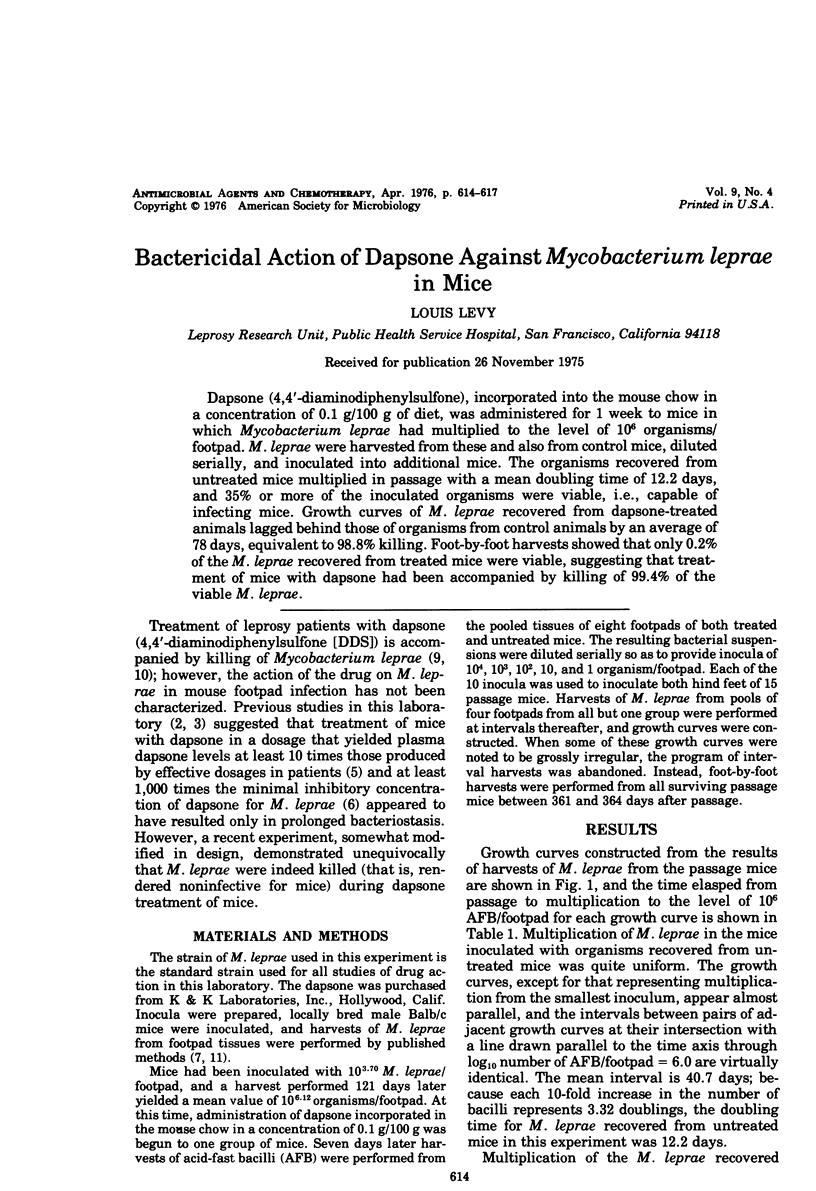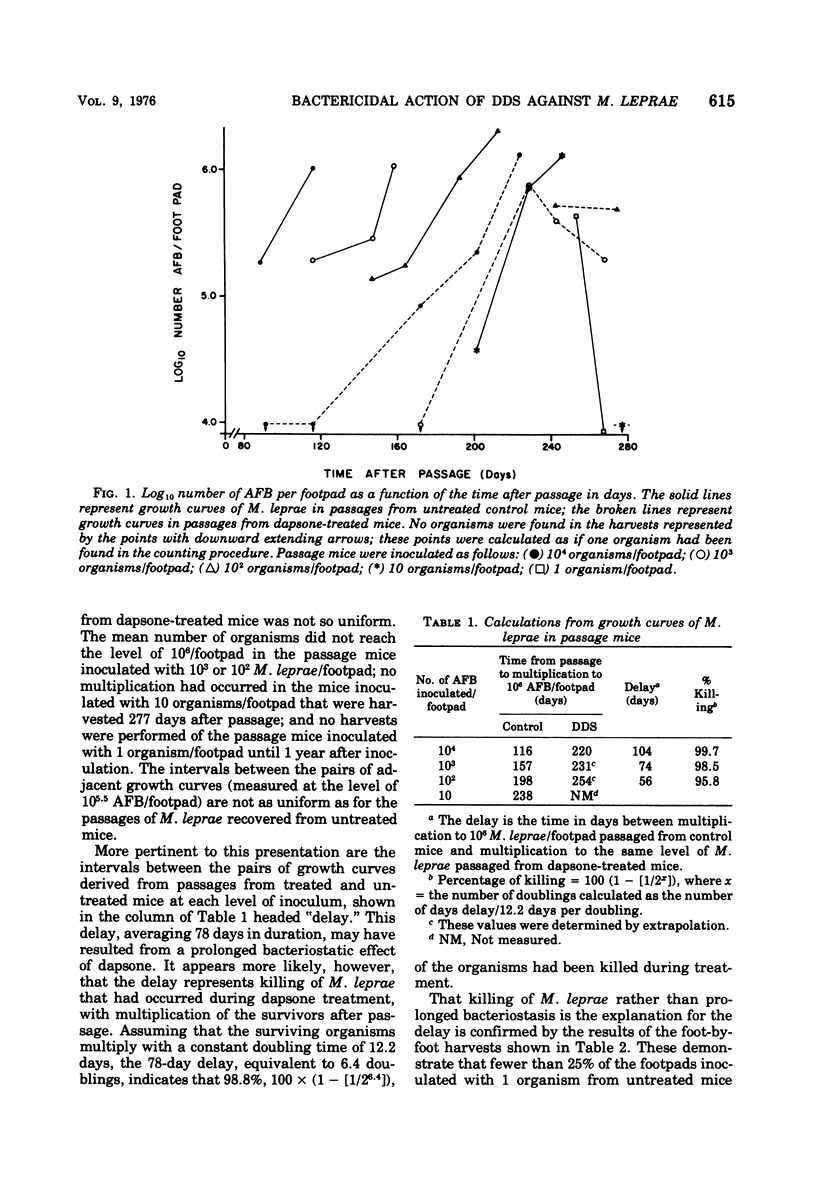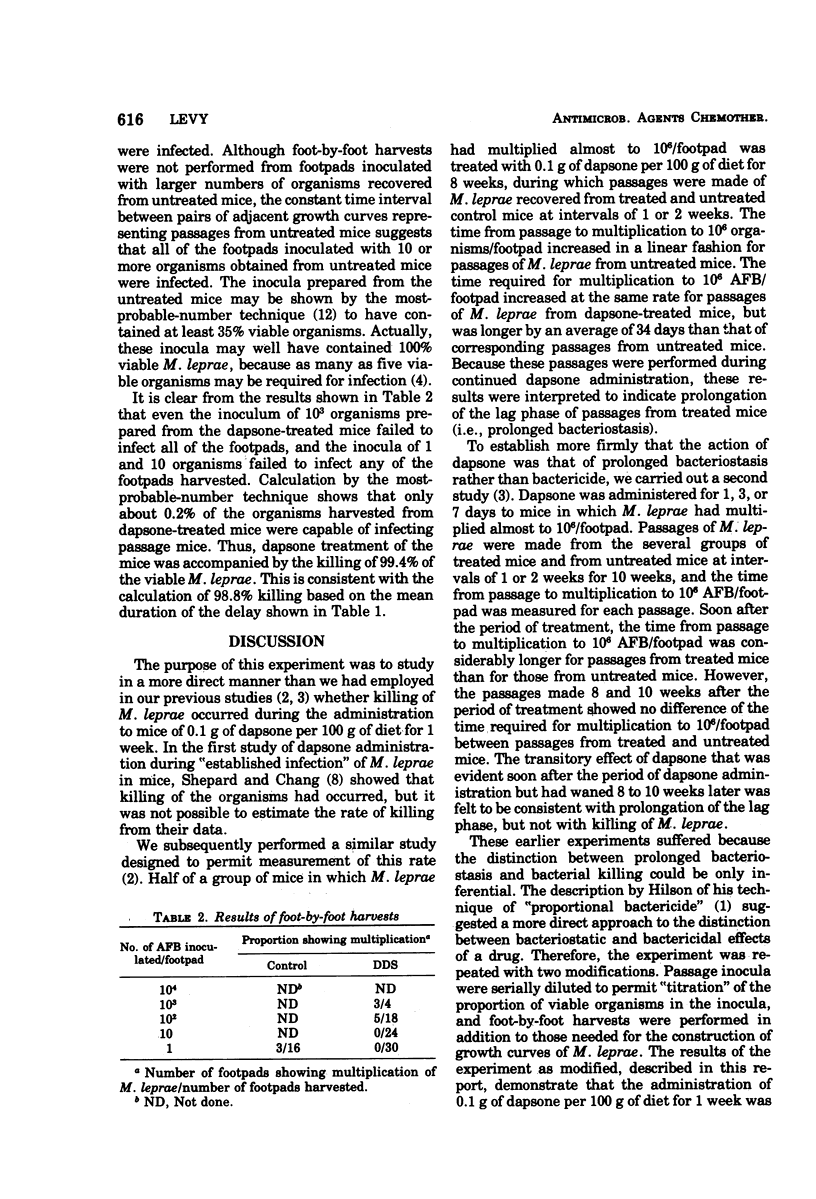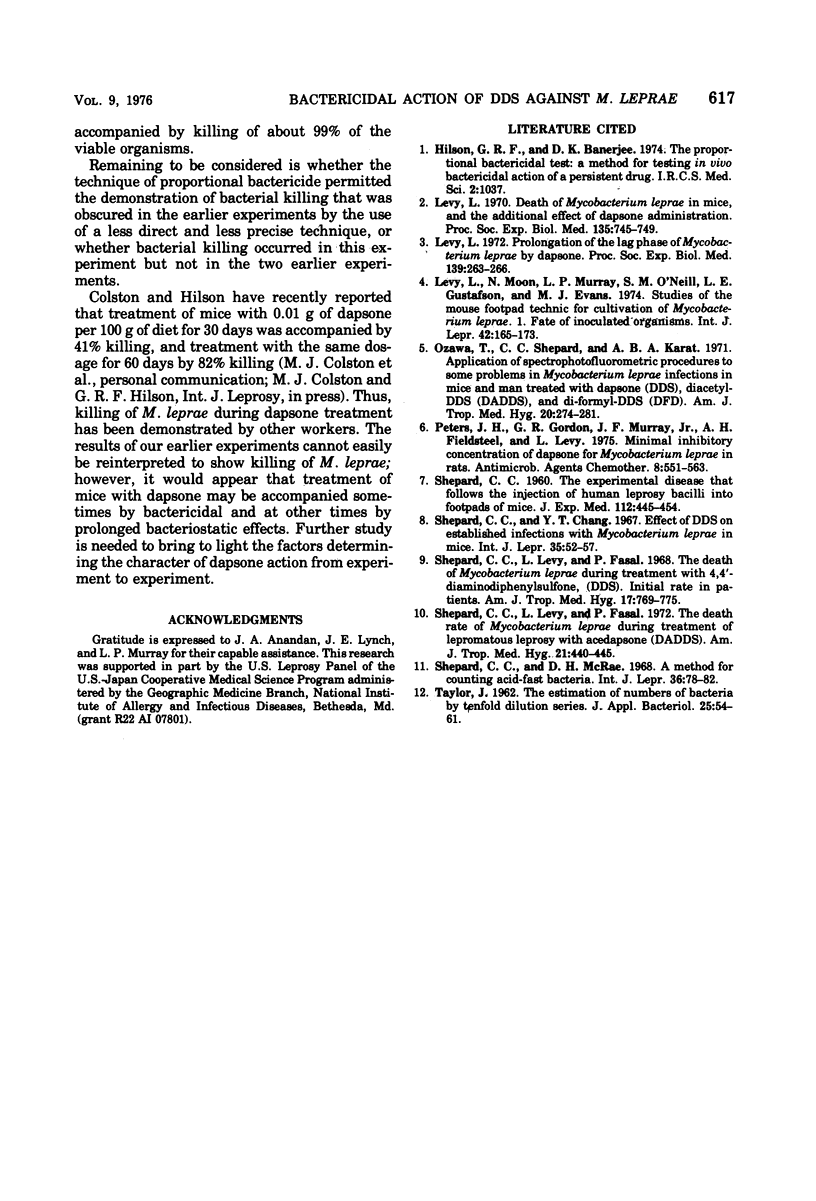Abstract
Dapsone (4,4′-diaminodiphenylsulfone), incorporated into the mouse chow in a concentration of 0.1 g/100 g of diet, was administered for 1 week to mice in which Mycobacterium leprae had multiplied to the level of 106 organisms/footpad. M. leprae were harvested from these and also from control mice, diluted serially, and inoculated into additional mice. The organisms recovered from untreated mice multiplied in passage with a mean doubling time of 12.2 days, and 35% or more of the inoculated organisms were viable, i.e., capable of infecting mice. Growth curves of M. leprae recovered from dapsone-treated animals lagged behind those of organisms from control animals by an average of 78 days, equivalent to 98.8% killing. Foot-by-foot harvests showed that only 0.2% of the M. leprae recovered from treated mice were viable, suggesting that treatment of mice with dapsone had been accompanied by killing of 99.4% of the viable M. leprae.
Full text
PDF



Selected References
These references are in PubMed. This may not be the complete list of references from this article.
- Levy L. Death of Mycobacterium leprae in mice, and the additional effect of dapsone administration. Proc Soc Exp Biol Med. 1970 Dec;135(3):745–749. doi: 10.3181/00379727-135-35134. [DOI] [PubMed] [Google Scholar]
- Levy L., Moon N., Murray L. P., O'Neill S. M., Gustafson L. E., Evans M. J. Studies of the mouse foot pad technic for cultivation of Mycobacterium leprae. 1. Fate of inoculated organisms. Int J Lepr Other Mycobact Dis. 1974 Apr-Jun;42(2):165–173. [PubMed] [Google Scholar]
- Levy L. Prolongation of the lag phase of Mycobacterium leprae by dapsone. Proc Soc Exp Biol Med. 1972 Jan;139(1):263–266. doi: 10.3181/00379727-139-36123. [DOI] [PubMed] [Google Scholar]
- Ozawa T., Shepard C. C., Karat A. B. Application of spectrophotofluorometric procedures to some problems in Mycobacterium leprae infections in mice and man treated with dapsone (DDS), diacetyl-DDS (DADDS), and di-formyl-DDS (DFD). Am J Trop Med Hyg. 1971 Mar;20(2):274–281. doi: 10.4269/ajtmh.1971.20.274. [DOI] [PubMed] [Google Scholar]
- Peters J. H., Gordon G. R., Murray J. F., Jr, Fieldsteel A. H., Levy L. Minimal inhibitory concentration of dapsone for Mycobacterium leprae in rats. Antimicrob Agents Chemother. 1975 Nov;8(5):551–557. doi: 10.1128/aac.8.5.551. [DOI] [PMC free article] [PubMed] [Google Scholar]
- Shepard C. C., Chang Y. T. Effect of DDS on established infections with Mycobacterium leprae in mice. Int J Lepr Other Mycobact Dis. 1967 Jan-Mar;35(1):52–57. [PubMed] [Google Scholar]
- Shepard C. C., Levy L., Fasal P. The death of Mycobacterium leprae during treatment with 4,4'-diaminodiphenylsulfone (DDS). Initial rate in patients. Am J Trop Med Hyg. 1968 Sep;17(5):769–775. doi: 10.4269/ajtmh.1968.17.769. [DOI] [PubMed] [Google Scholar]
- Shepard C. C., Levy L., Fasal P. The death rate of Mycobacterium leprae during treatment of lepromatous leprosy with acedapsone (DADDS). Am J Trop Med Hyg. 1972 Jul;21(4):440–445. doi: 10.4269/ajtmh.1972.21.440. [DOI] [PubMed] [Google Scholar]
- Shepard C. C., McRae D. H. A method for counting acid-fast bacteria. Int J Lepr Other Mycobact Dis. 1968 Jan-Mar;36(1):78–82. [PubMed] [Google Scholar]


